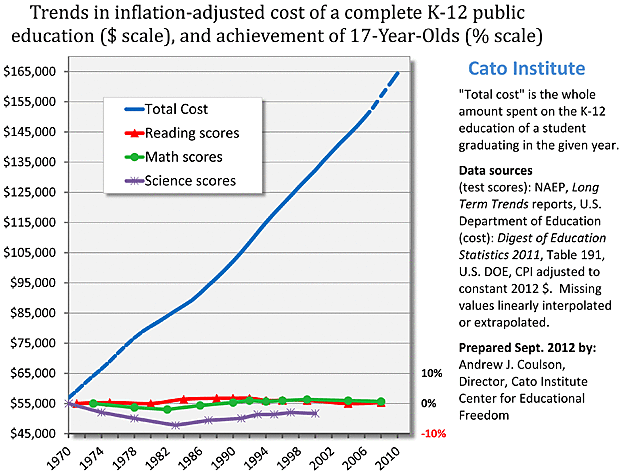Not widely known is that the FOCUS engineered lawsuit brought by Washington Latin PCS, Eagle Academy PCS, and the DC Association of Chartered Public Schools ended quietly in July of 2019 when the U.S. Court of Appeals for the District of Columbia Circuit dismissed the legal action on the grounds that the case did not belong in federal court. The original action was brought in part because of an analysis by Mary Levy that found that between the 2008 and 2012 school years the traditional schools received between $72 million and $127 million annually in funding outside of the Uniform Per Student Funding Formula to which charters did not have access. As stipulated in the School Reform Act, all revenue for public school funding must come through the UPSFF.
So now what? Should a new court case be started? This would be my preference but in reality I recognize that the chances of a sequel are nil. FOCUS, who organized the past effort, is no more, replaced by the DC Charter School Alliance. One of the plaintiffs, the DC Association of Chartered Public Schools, also ended operating, being melded into the Alliance. I sense that with charters struggling to open in the face of the pandemic, a fight with the city is about the last thing these institutions want to concentrate on.
I’m calling for a new strategy, one that is already in play. What I’m seeing is that the Alliance is actively seeking assistance from city agencies. Take for example, this recent testimony by founding executive director Shannon Hodge before the D.C. Council’s Committee on Health:
“First, in November, charter school leaders laid out what schools needed from city officials that would enable schools to safely bring more students back to building for in-person learning. We asked the city to provide equitable access to health-related services, including providing at least one nurse or medical professional in every school building who could serve all students, teachers, and staff on site. We also asked for asymptomatic COVID-19 testing. But more importantly, we asked for DC Health to provide clear, updated orders and public health guidance to enable schools to provide quality in-person learning environments for more students during the pandemic. The city responded. DC Health updated public health guidance, the Office of the State Superintendent of Education (OSSE) issued a Frequently Asked Questions document for school leaders, and public charter schools now have access to the city’s asymptomatic testing program. As a result, we have more students in charter school buildings.”
The 2013 Adequacy Study, that the Alliance likes to quote, called out all of the money that DCPS receives to which charters do not receive. This includes “Teacher Pensions,” “Educational Furnishings and Equipment,” “Information Technology Services and Equipment,” “Risk Management, Legal Services, and Settlement,” “General Maintenance—Buildings and Grounds,” “Custodial Services,” and “Utilities.”
Instead of trying to have the Mayor and city council increase funding to charters to cover these expenses, charters should demand that these services also be proved to charters. The argument is simple. It is a matter of equity.
Now I can hear the counterargument in my mind already. Many charter leaders will state that they don’t want things like housekeeping provided by the D.C. government; they believe that it will be done better by the vendor of their choosing. My response to this line of reasoning is that it is fine. Don’t take the help if you don’t want it. But in these times of fiscal restraints the option of charters to take advantage of these offerings could allow the reallocation of expenditures toward augmenting the instructional program.
Moreover, who in the nation’s capital in 2021 could possibly be against equity?
